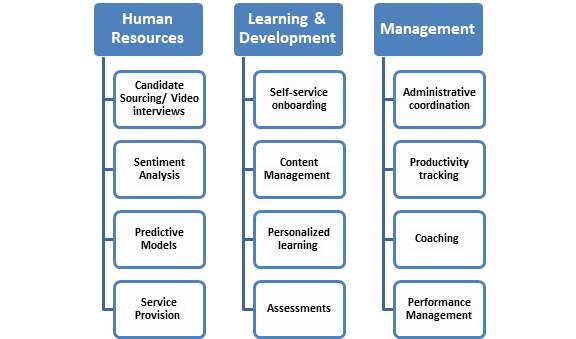What leaders need to know about AI

Organizations today are focused on identifying avenues to introduce AI into daily tasks and deliverables. While the common perception is that it creates a sense of insecurity among employees, contrary to this belief, employees are in fact more receptive and ready to deploy AI into their work, a study by Dale Carnegie reveals.
During a roundtable discussion on “Preparing people for the Human Machine Partnerships of the future,” conducted by Dale Carnegie in New Delhi, experts explored ways in which industry leaders can incorporate AI technology into their HR Tech, performance feedback systems, upskilling initiatives, etc.
The panel discussion was led by Dale Carnegie representatives including Pallavi Jha, MD & Chairperson, Dale Carnegie of India; Mark Marone, Director - Research & Thought Leadership, Dale Carnegie and Associates; Juliette Dennett, Managing Director, Dale Carnegie Northern England; and Jordan Wang, Managing Director New South Wales, Dale Carnegie Australia.
The survey that saw participation from 3,846 respondents across 13 countries, aimed to assess the readiness of the global workforce to accept AI in their work, feedback systems, skilling needs, etc., highlighted that 42 percent of the organizations globally are already using AI in one form or the other.

War of skills: Human vs. AI
AI can take over data processing and predictive analytics at workplaces but where it still lacks is in developing the ability to manage and develop people, build communities, and interface with stakeholders. The chances of AI being able to recreate the human experience in interpersonal interactions are bleak. Although, while AI becoming a people manager seems unlikely, it has established its worth as an employee, rather a virtual employee. Two such virtual employees are Amber (at Evalueserve) and Andrew (at GlobalLogic), among other AI-based employees.
AI might be able to make its way through automation, however, humans aren't far away in stepping up to do what AI cannot. 73 percent of respondents indicated an inclination towards acquiring soft skills with the focus largely on communication skills (69 percent), creativity (64 percent), critical thinking (56 percent), leadership (54 percent), teamwork (50 percent), emotional intelligence (44 percent) and empathy (28 percent). Given AI currently lacks creativity and social intelligence, training employees on these skills could give organizations an edge by creating a power workforce with AI and employees working together as a team rather than as competitors trying to replace each other.
Application of AI across functions
Speaking of AI application in the L&D function, Nishchae Suri, President (APAC, Middle East & Africa) at Edcast said, “The ability of leveraging the value of these technologies is dependent on the capability of functions that will deploy it. One of the biggest barriers in using AI in organizations is the capability and capacity of the L&D function itself within the organization. To power the organization you must power the function first.”
He further added that there has been a significant shift in upskilling and upgrading the capability of the L&D function and the nature of services being provided by them.
“The agility of the learning function has enhanced significantly,” he said.
Given below are some of the applications of AI across functions as shared by Mark Marone, Director - Research & Thought Leadership, Dale Carnegie and Associates:

Challenges in using AI
AI comes with its own set of challenges. It might facilitate quicker data processing and prediction, but the technology has a lack of clarity in HR applications with respect to the following:
- Lack of large data sets: There is a lack of large data sets, especially in spaces of recruitment and sourcing.
- Performance Management: AI is capable enough to streamline data and highlight outliers, however it is not mature enough to define what makes an employee "good".
- Transparency: Despite there being a need to make AI-based processes as transparent and clear to employees as possible, certain tasks need a more detailed algorithm, increasing the complexity in presenting a clear picture to the employees.
- Contrast between predictions and suitability: There is a likelihood of a built-in bias in the algorithm. While the data is used to design people decisions, there might be a contrast between predictive power of AI and suitability of the recommendations or predictions when implemented at the workplace.
- Profound consequences: AI-based people decisions bear a huge responsibility when executed and need to be credible enough to cater to all aspects of employee lifecycle.
“There is a tension between predictive power and appropriateness. While data generated using AI may have good predictive powers, it may not always be appropriate, so HR leaders need to think about how to balance the trade-off between what’s efficient and what’s appropriate,” said Marone.
Focus areas for leaders
- Trust in the digital age: If employees have faith in the leadership, they are more likely to be positive about introduction of AI into their work. Leaders should be able to build trust and provide psychological safety to their employees especially addressing their cybersecurity and privacy concerns.
- Transparency: Transparency is crucial in AI, especially when it is being used in areas such as performance management and feedback sharing. Employees are more open to AI assessment in performance if criteria is transparent.
- People-focused perspective: Addressing employee emotions related to fear, insecurity, and uncertainty about how AI will change their role, leaders must skill their people to be able to transition and adapt to the impending changes that are a product of adopting AI across functions.
- Good decision-making: In the spirit of digital transformation, organizations are becoming agile in adopting the latest technologies. However, the cost-benefit of investing in these technologies will differ from organization to organization. The decision to invest must be made only if they improve productivity and experience (for the employee and the customer).
There is a need to bridge the existing knowledge gap on the intent of using AI and its capabilities. It's time to change the mindset from competitors to a power combo of humans and AI!













